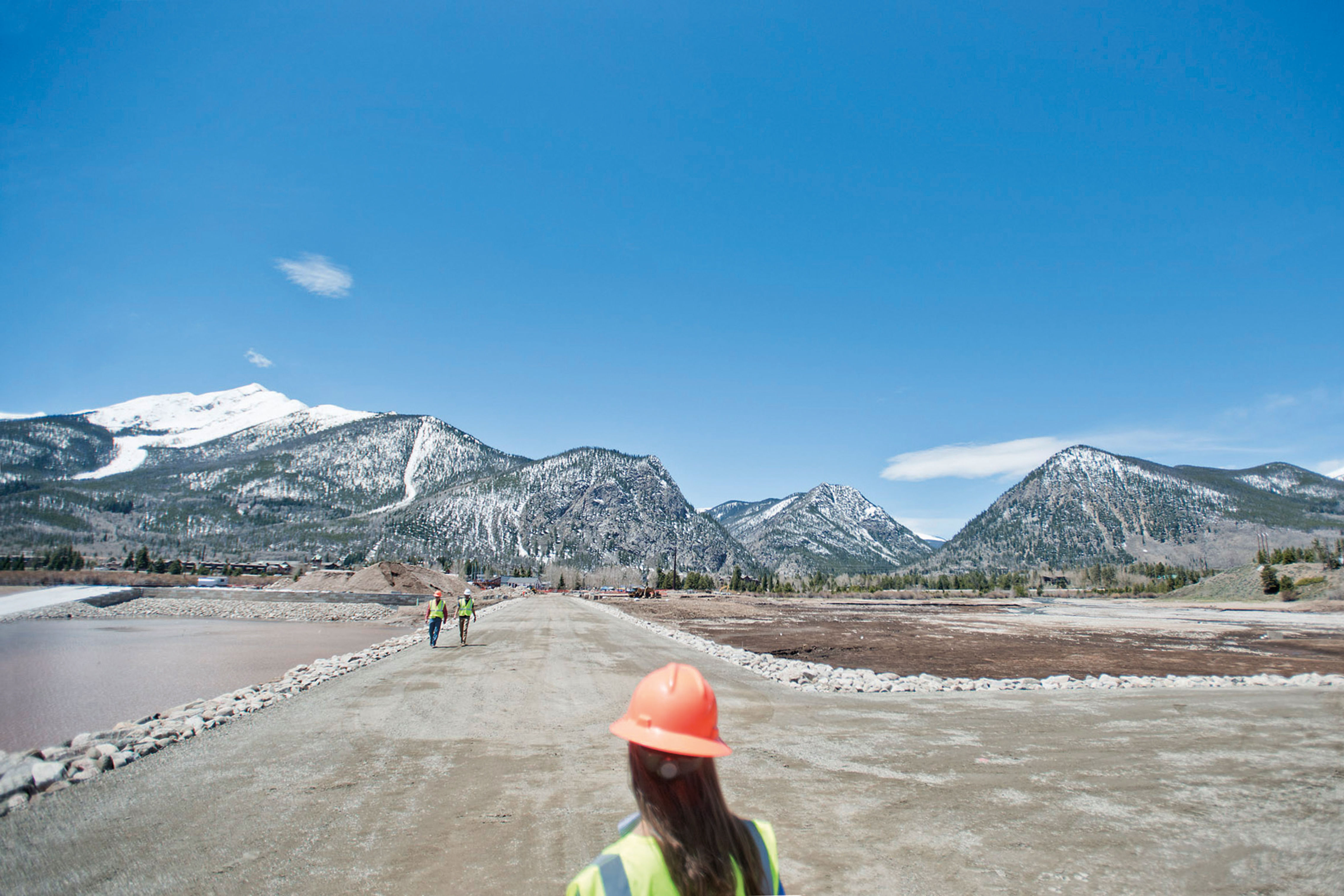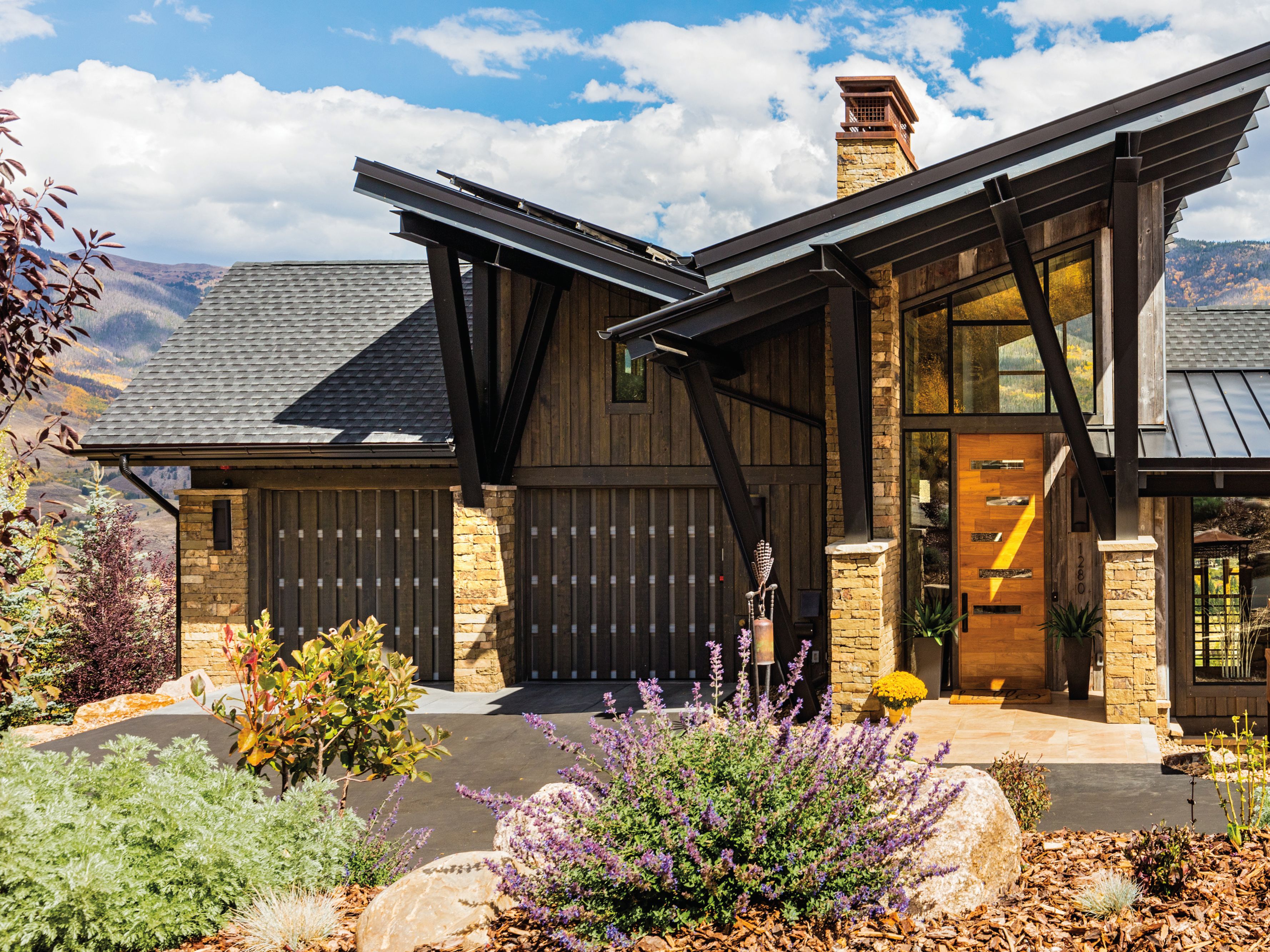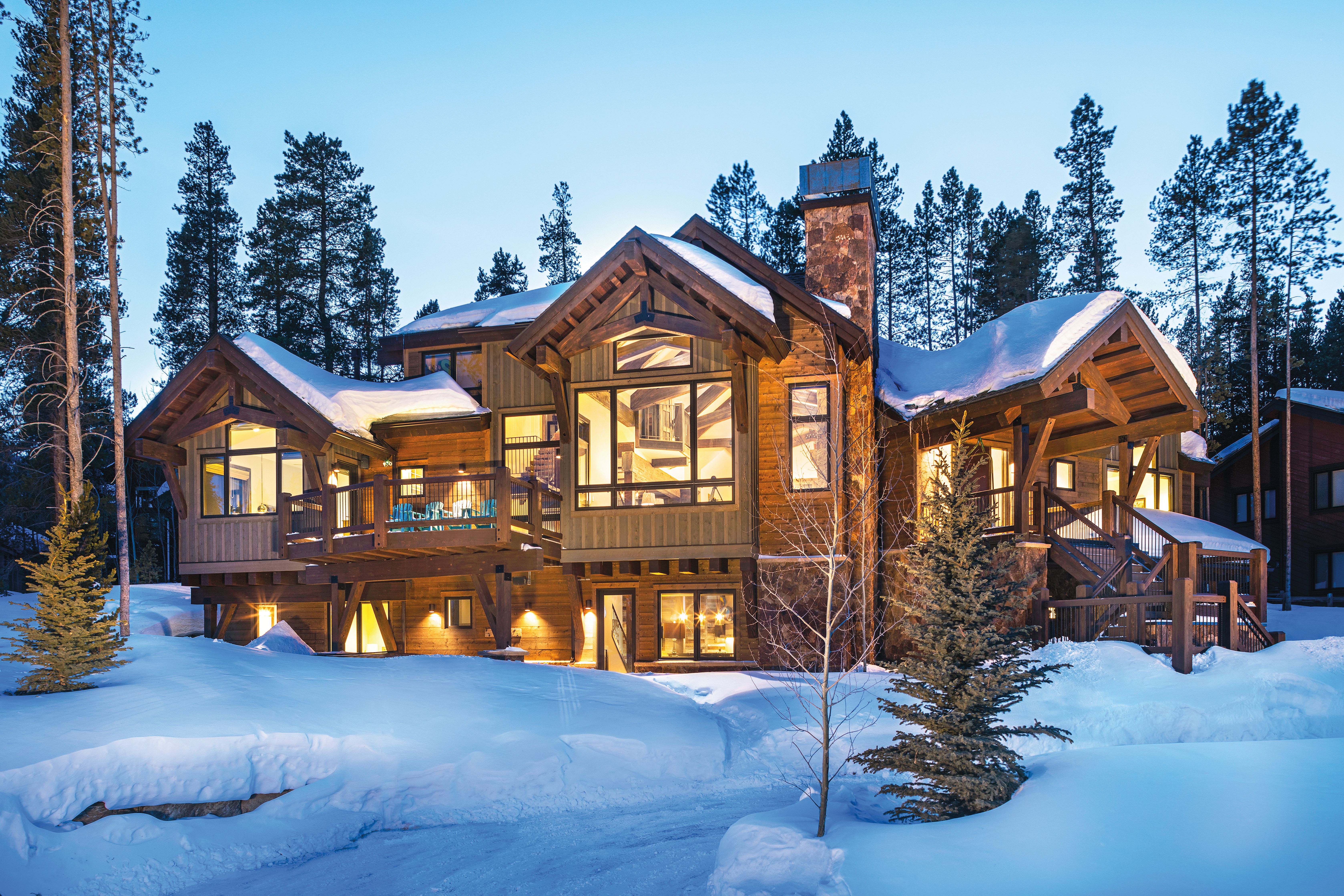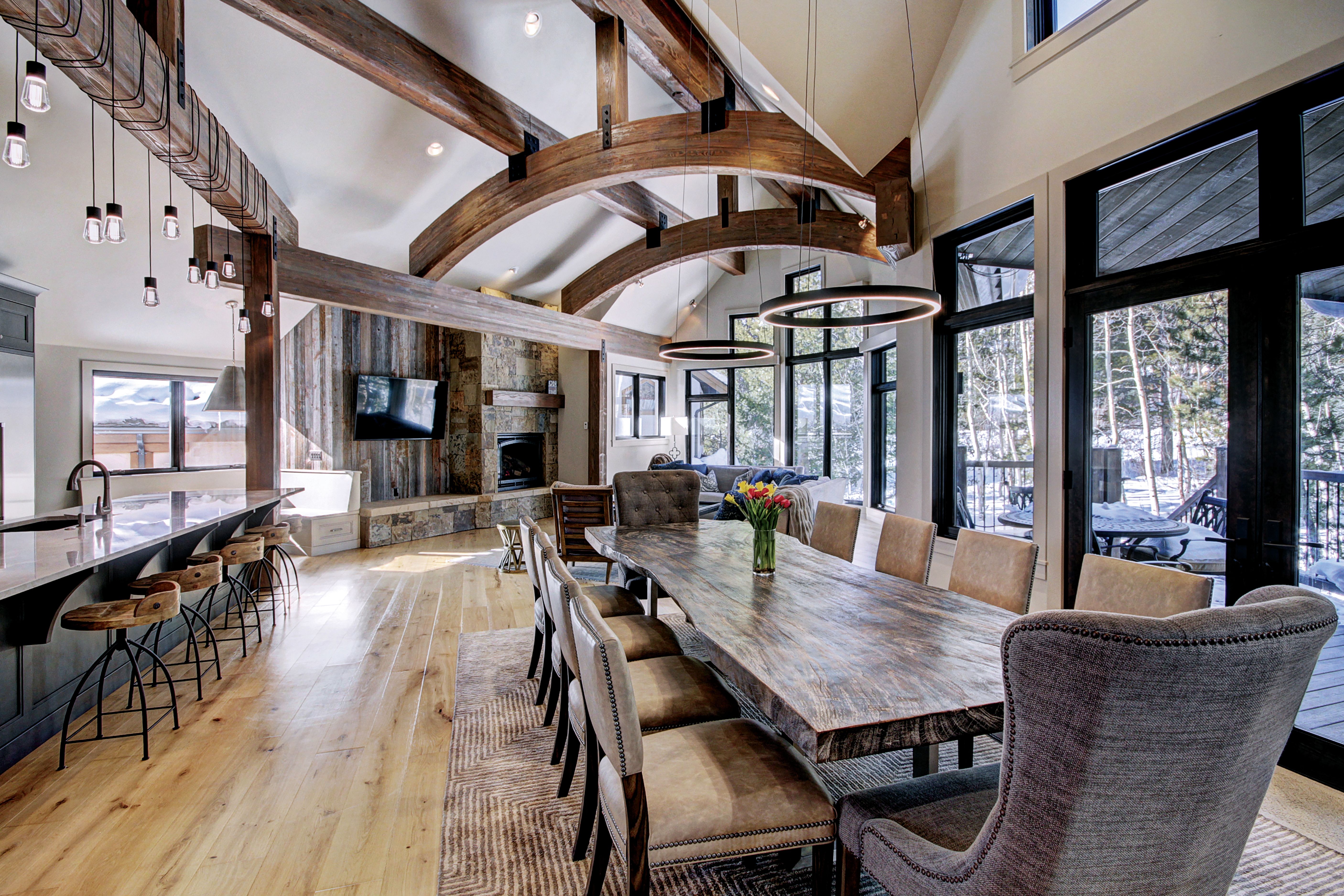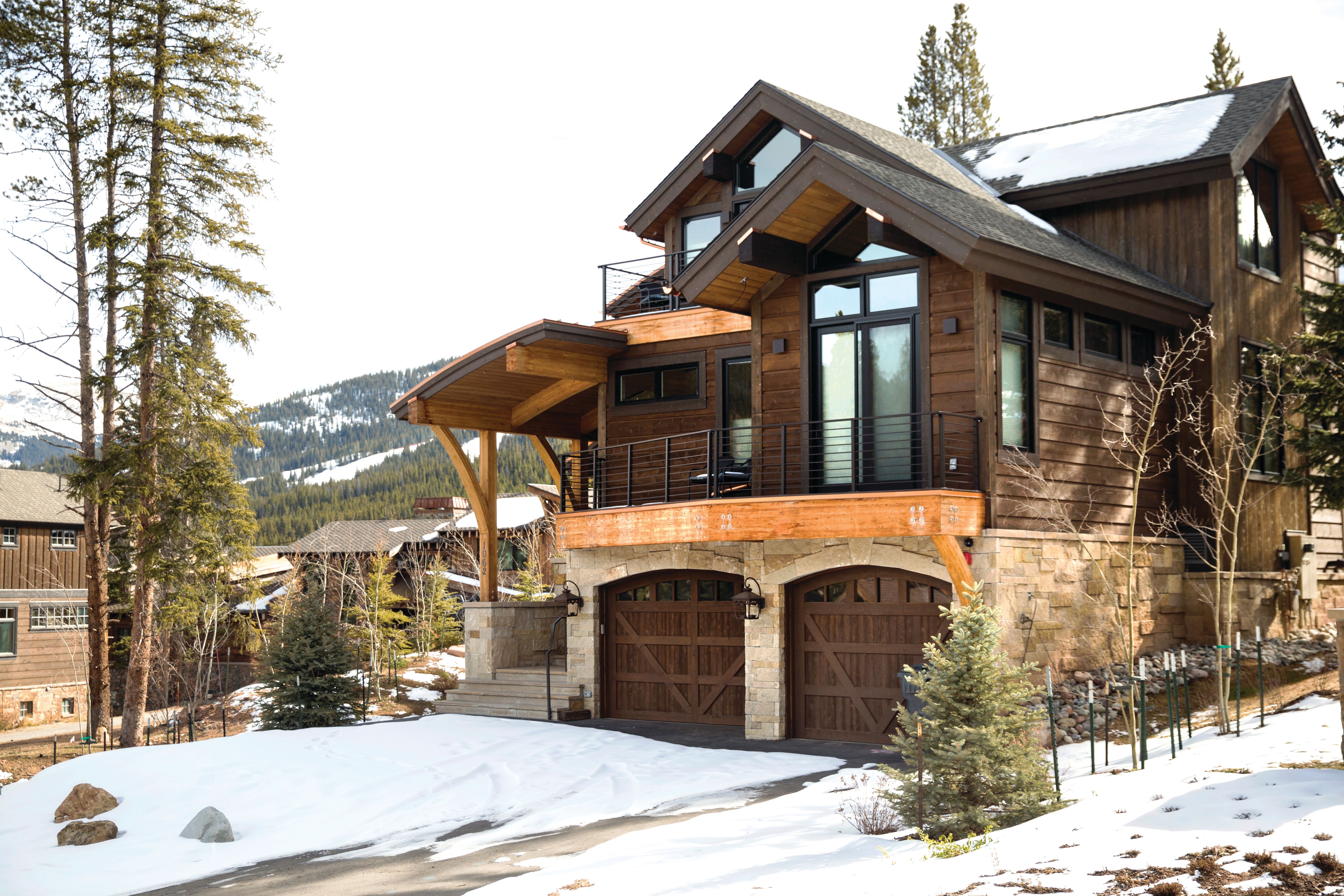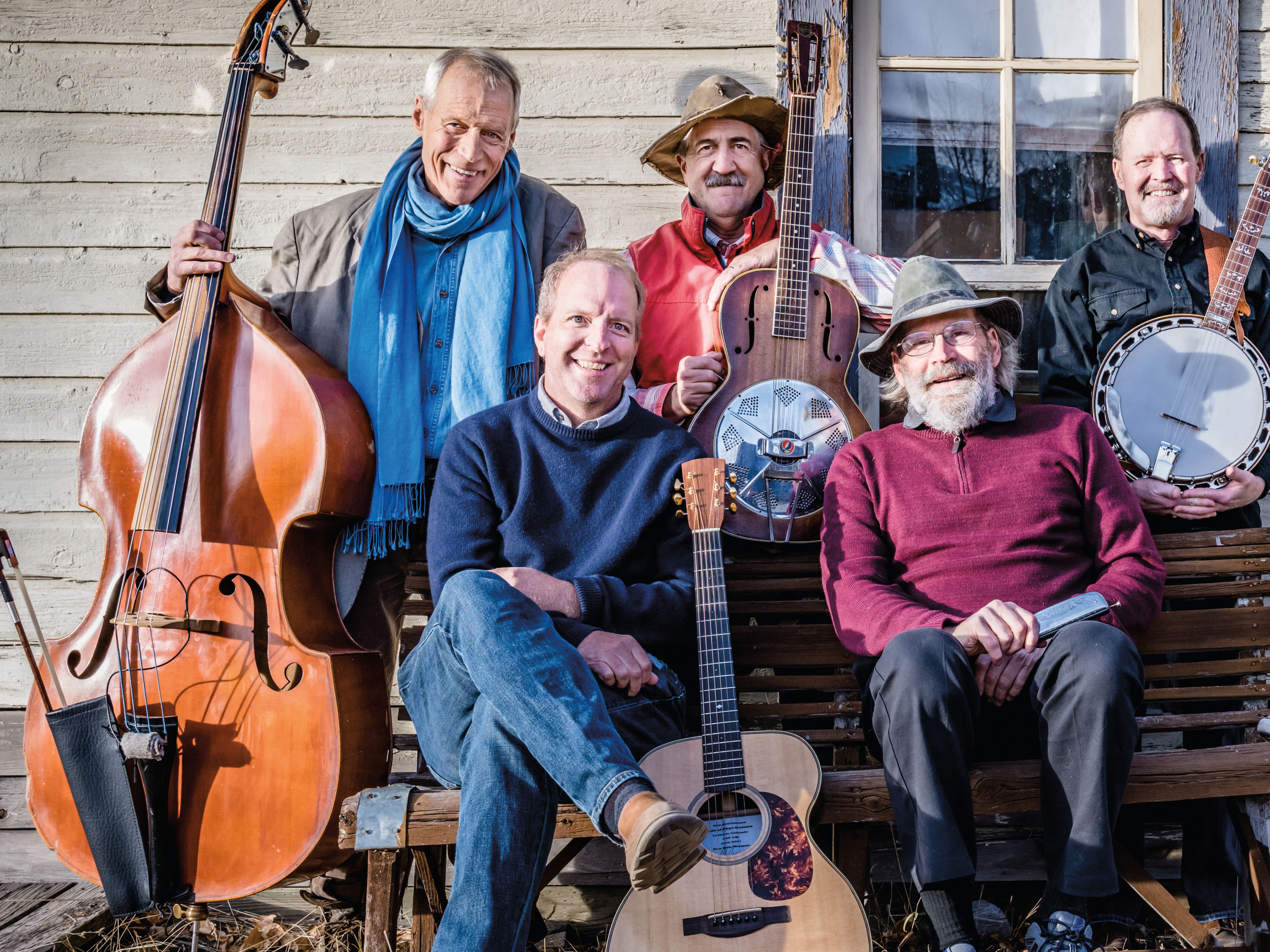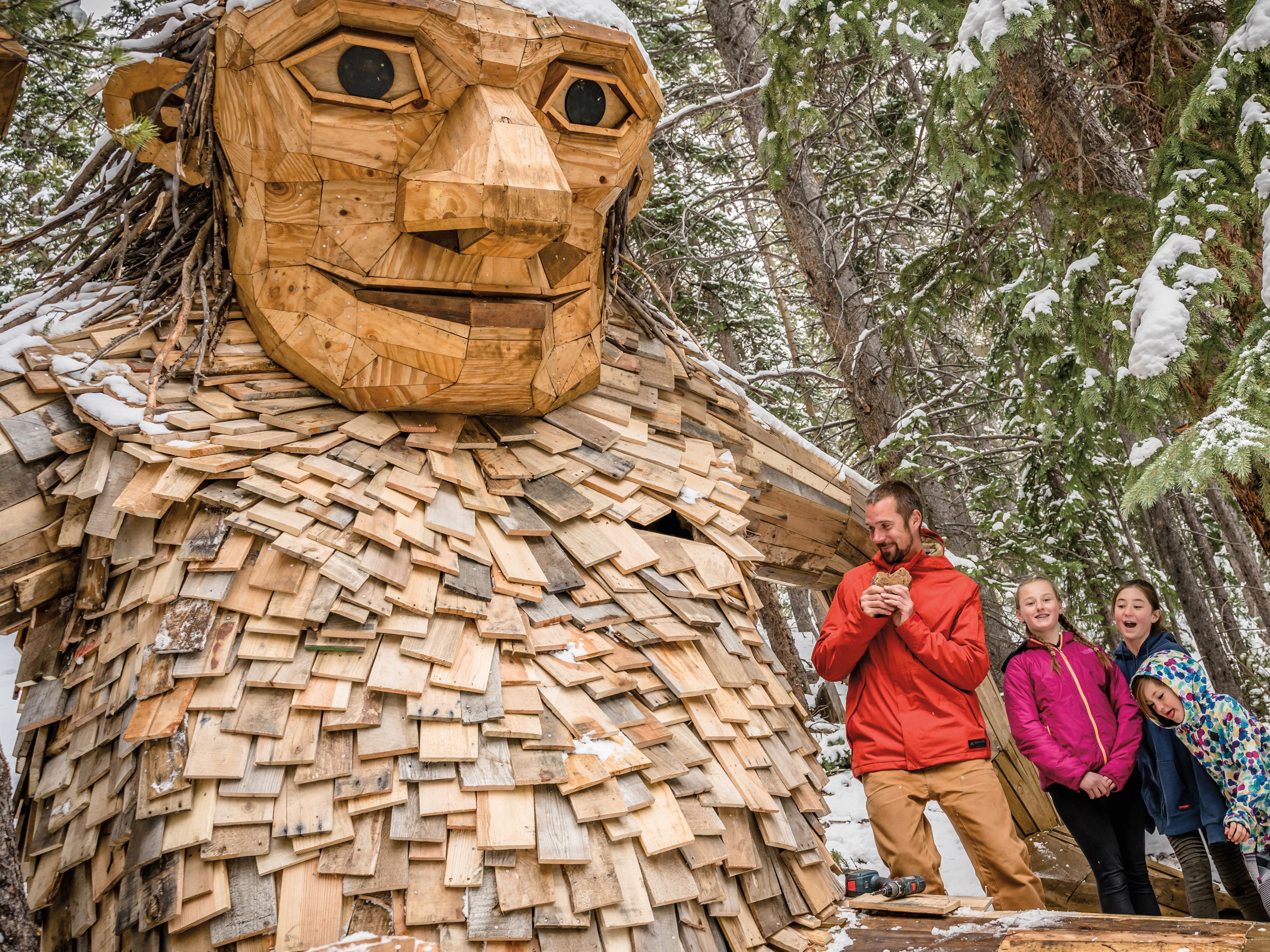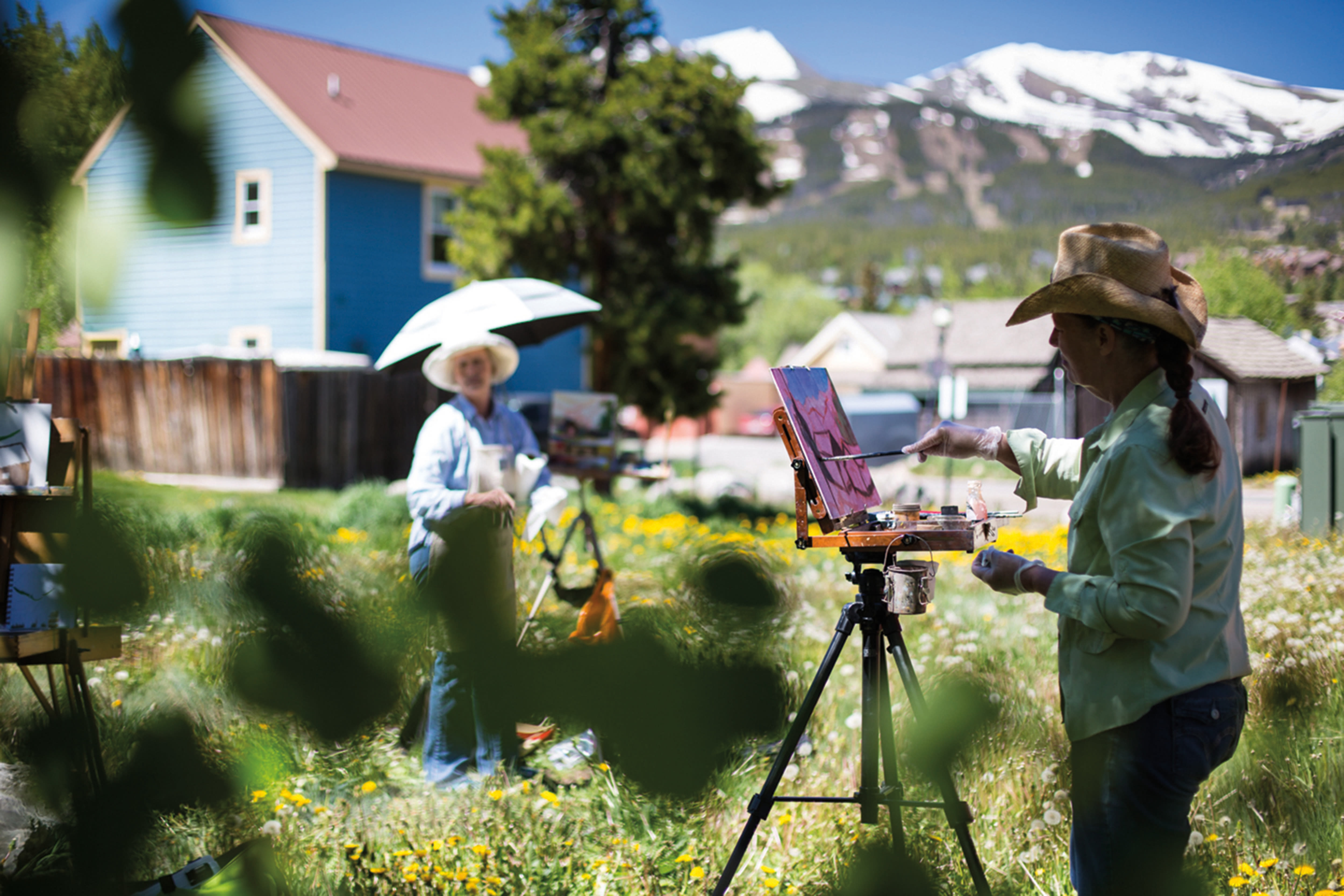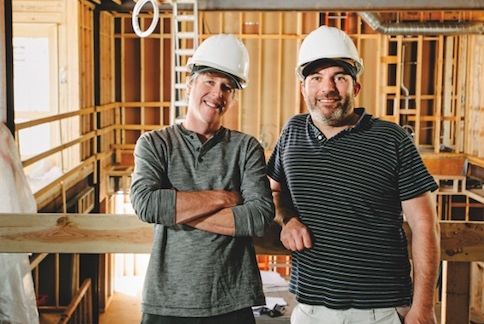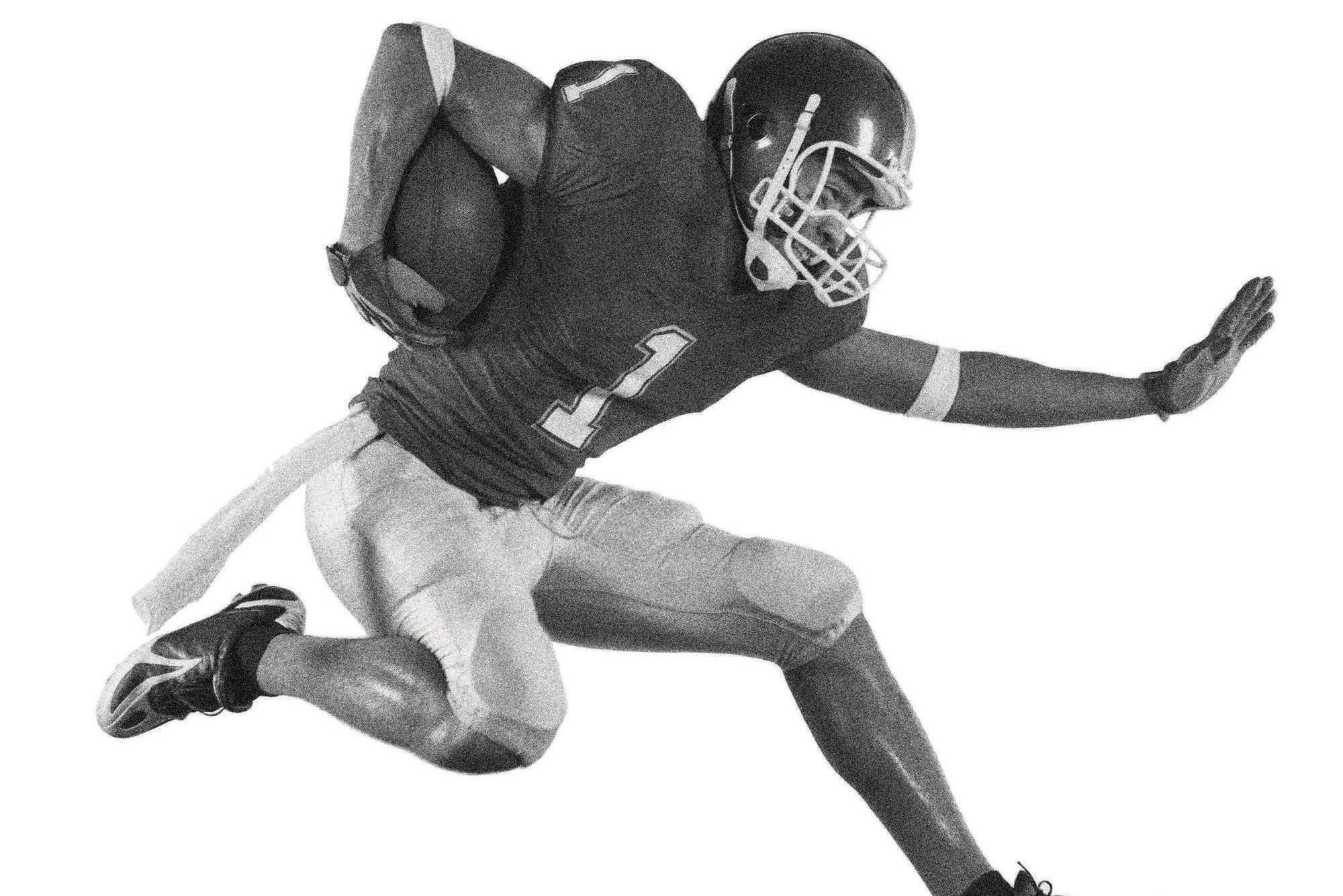Article
Racing The Wind
Meet the sailing legends who command the highest yacht club in America.
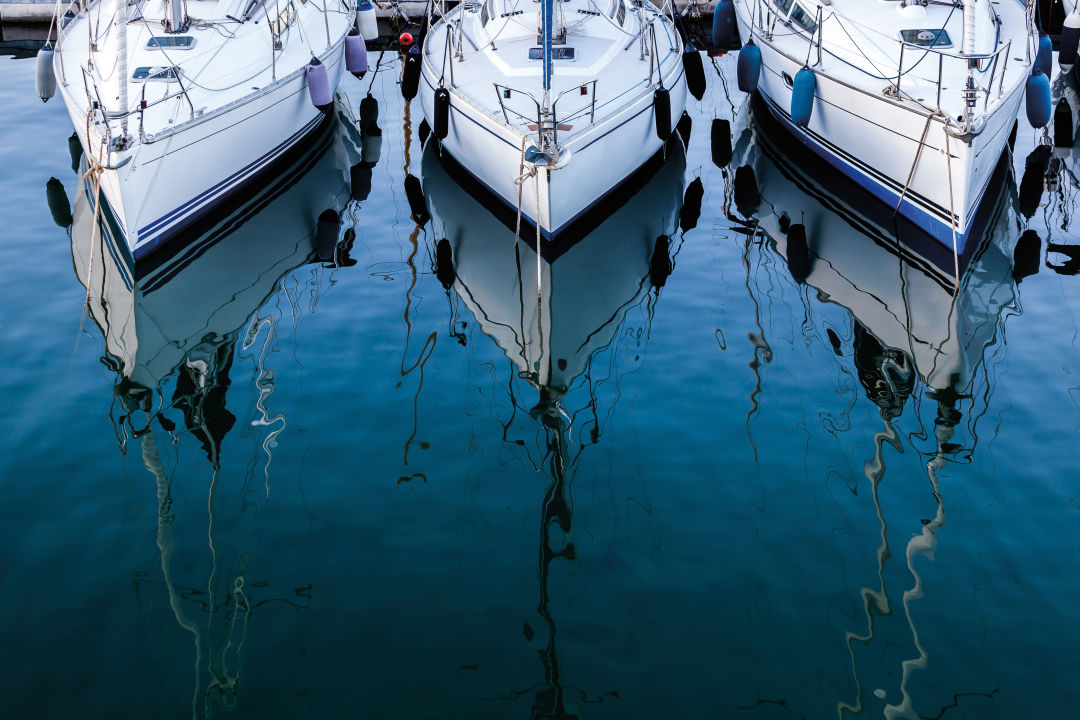
Image: Shutterstock
The Dillon Yacht Club traces its origins to a uniquely Summit County competition in the mid-1960s. Playfully referred to as ski yachting, or skailing, the event combined two days of sailboat racing on the newly filled Dillon Reservoir and one day of giant slalom competition at Arapahoe Basin Ski Area. It was held on Memorial Day weekend, before all of the ice had cleared from the lake.
The first edition attracted a nascent ski filmmaker named, ahem, Warren Miller, as well as sailors from across the Front Range who flocked to Colorado’s new racing venue at 9,017 feet. The event was a success, despite some logistical hurdles, and continued for two more iterations. By the race’s third year, it had grown to include 130 boats. But during one of the regattas, a monstrous storm blew in, pelting teams with hail and torrential rain. Witnesses later reported five-foot waves and 60mph winds. By the time the storm let up, only two boats still had their sails rigged. Others ended up on the rocks or capsized. Three competitors were taken to the hospital. The carnage brought an end to the ski yachting event, but Dillon’s sailing history was just beginning.
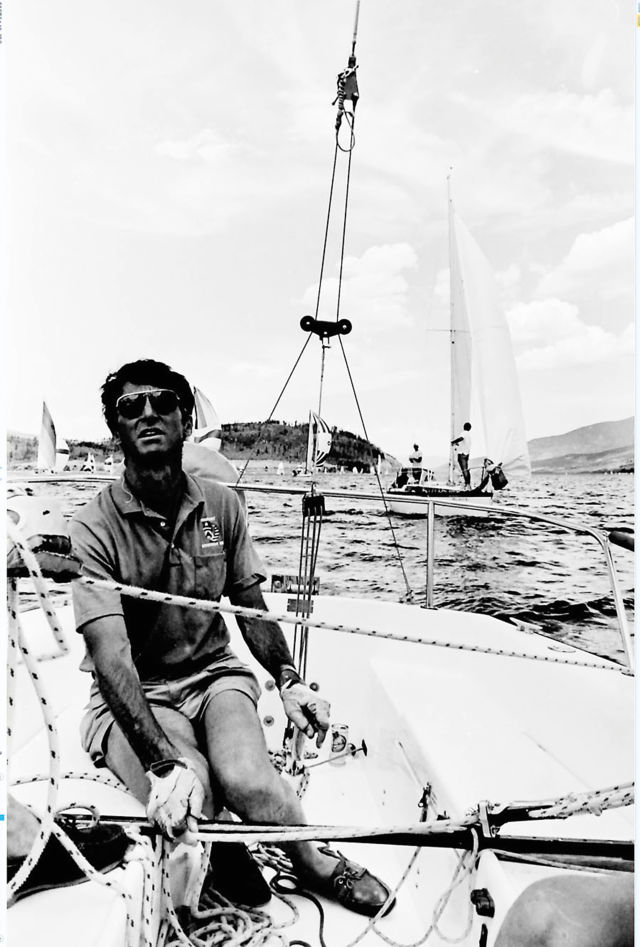
Bob Kortz racing "Tachyon" on Dillon Reservoir in the 1980s; As former Summit Sentinel Reporter/Photographer Brad Johnson recalls, "Either we were ahead of our fleet, or the fleet that started five minutes behind us was catching up. Not saying which is true."
In 1968, a group that included A-Basin co-founder and 10th Mountain Division veteran Larry Jump founded the Dillon Yacht Club, which immediately became the highest in America. Membership totaled about a dozen the first year, but it quickly grew, as did the talent on the lake. Local sailors worked to master the notoriously fickle winds—and to survive the gales that have become part of Dillon’s lore.
Last summer, the club celebrated its 50th anniversary. Its hardscrabble beginnings paved the way for one of the most respected freshwater clubs in the world, one that has attracted sailing royalty over the years—Olympic champion Mark Reynolds, two-time J/24 world champion Tim Healy, and Augie Diaz, a three-time world champion in two classes, have all competed on Dillon.
The Yacht Club’s roster boasts 160 members, some of the best sailors in the region who oversee competitive racing on the lake, including the club’s signature regatta (the Dillon Open, Aug 3–4; dillonyachtclub.com). They also happen to be the liveliest group of yarn spinners you’ll find in Summit, sharing stories at post-race barbecues under a circus tent. Though their clubhouse has grown from a shed to a double-wide trailer, their lack of pretention and love for sailing still define the place. Here, some of the club’s saltiest sea dogs—figuratively speaking, anyway—reminisce on five decades of breezy bliss.
John McGann (oldest living member at age 90): I don’t know who came up with the idea of ski yachting, but there were two sailing clubs in Colorado at the time, and everyone drove up for it. I’d never seen a pair of skis before. But I had a guy sailing with me who was a terrific skier. Well, I went down the slope on my stomach, but he was the fastest guy on the hill, so we took second place overall. That really was the start of this thing. I had membership no. 3 in the club. I think the initiation fee was $50.
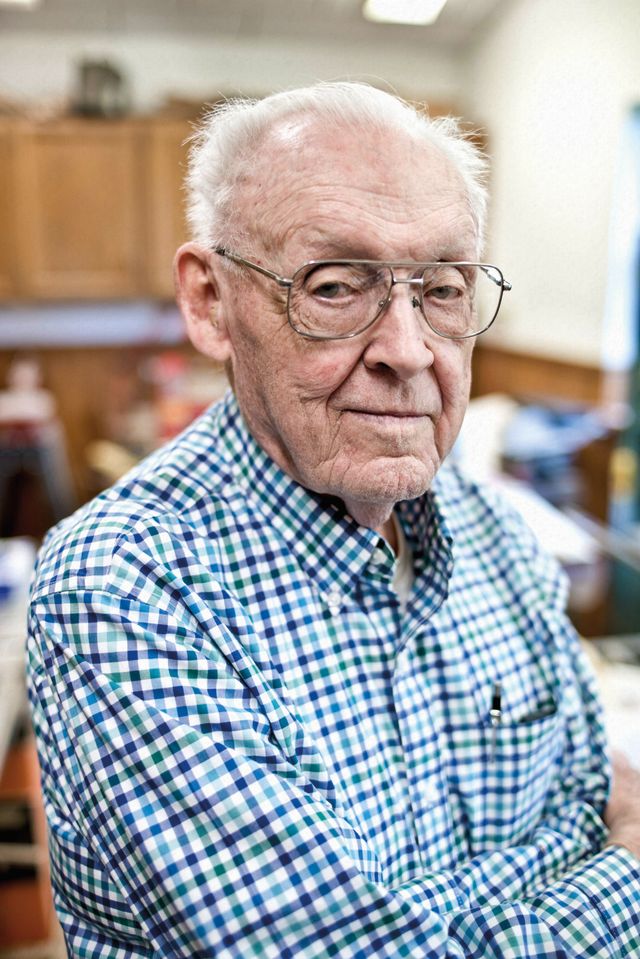
John McGann
Image: Karl Wolfgang
Sue Swisher (former commodore, longtime crew member): My family moved to Summit County in 1971, and we joined the club the following summer. I was in junior high; there were about 1,500 people in the county back then. Dillon didn’t have a clubhouse. It was just this little hut on the hill by the parking lot. A lot of locals were sailing here, and some people from Denver.
Paul Kresge (former commodore, Dillon Open champion): The club has always been a racing club. It’s not been about cruising or lollygagging around on the water.
Bob Kortz (former commodore): I started sailing Dillon around 1980. I’m not an ocean person, but I joined some friends and fell in love with it. I used to drive up from Denver during the week and tinker with the boat. I wasn’t the best sailor; I was always chasing the other guys. But the club had fabulous people. That’s what kept me around.
Frank Keesling (former commodore, Dillon Open champion in six classes): Dillon is obviously a flatwater environment: we have no waves, we have no current. But our shifting winds make Dillon unique to anywhere else.
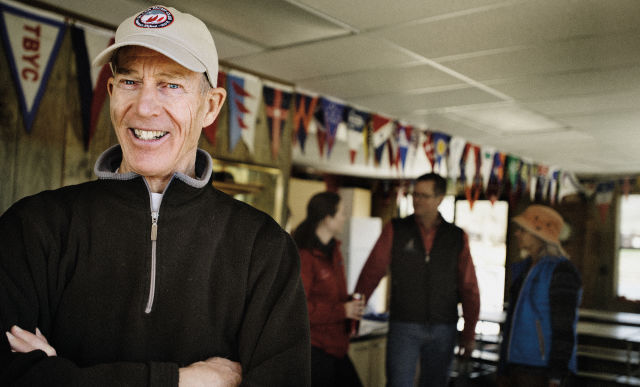
Paul Kresge
Image: Karl Wolfgang
Kortz: It takes magic to sail on that lake. You could start out and the sun was shining with no wind, then pretty soon there came a microburst and you were holding on for dear life, and if you survived that, then the sun came back out.
Keesling: If you see a white mist blowing up off the top of the waves about a foot high, you know it’s about to get powerful.
Swisher: Sometimes the whole lake changes color. I don’t know if it’s from the wind or what the atmosphere does, but the water will turn this really weird green color, and you know right after that all hell will break loose.
Kortz: During big storms you would be scared to death. The wind would come up and just blow so hard. One day, not during a race, we were out there in a gale, and lightning hit a good friend’s boat. He was able to get the boat in to shore, but it had a bunch of holes in the bottom, where water was coming in. I remember being down underneath his boat and taking buckets of water, handing them to the next guy, who would hand them to the next guy, and so on. We kept doing that for a long time, until they finally got a crane to lift it out of the water.
Swisher: Five or six years ago, we had Buccaneer nationals on Dillon, so it was a big race. We were going downwind from the dam to the point, where the starting line is, and I remember hearing the wind coming up behind us. So I yelled at the guy I was with, “We need to take down the spinnaker right now!” We didn’t get it down in time. The wind came through like a freight train, capsized 90 percent of the fleet. The sheriff actually took people off of boats and took us all into shore and left the boats in the lake, floating upside down. We went back and got them later when the wind died down. It was that bad.
Kresge: Luckily over the years we haven’t lost anybody. We’re very fortunate for that, because the lake can churn up pretty significantly at times.
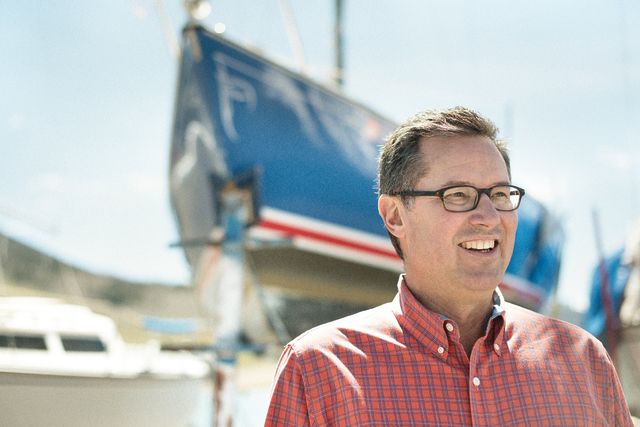
"The big stars of our sport have all heard about Dillon." - Frank Keesling
Image: Karl Wolfgang
Swisher: Sailing here takes a little luck and a lot of skill. It creates really good sailors.
Keesling: I’ve sailed in 42 of the 47 Dillon Opens and won about a dozen. The first Dillon Open I ever won, I forget the year, and I gotta tell ya, I don’t remember the race at all. But I do remember coming back in, and it was so exciting to go up on stage, pick up the trophy, and then have not just my own teammates but all the members of the fleet we were racing put me on their shoulders and take me out and throw me in the lake. I was in my midtwenties. The other competitors had watched from the time I bought the boat when we were getting our asses kicked by everybody else, to winning the Open.
Kresge: In the grand scheme of things, when you win a sailboat race you get a pickle dish. It’s great to win, but you have to keep things in perspective. I’ve had to learn this over the years; I’ve been racing for more than 40 years. This isn’t world peace, it’s just a sailboat race. But people are pretty dedicated about their sailboat racing here.
Keesling: The big stars of our sport have all heard about Dillon. The club has been written up in Sail and Sailing World magazines, so people know it, and they’ve seen pictures. But once they come out and experience it, they’re like, “This is the craziest place I’ve ever sailed”—in a positive way. The scenery is outstanding, but Mother Nature is throwing everything at you. That’s what makes it entertaining.
Swisher: The parties are good too. One time we did roof shots off the original Tiki Bar. Someone would crawl up onto the roof, you’d buy shots, hand them to the person on the roof, stand on a stool, and take the shot as it flowed off the corrugated metal.

"It takes magic to sail on that lake." - Bob Kortz
Image: Karl Wolfgang
Keesling: A lot of people take advantage of the reciprocity benefit, which is: if you’re a full member of the Dillon Yacht Club, you can pretty much walk into any other club across the country, if not the world, and have access to those private clubs.
Kortz: One year when I was commodore, we all gathered for my season-opening welcome talk. A lot of guys used to wear khakis and a blue blazer like the big-time yacht clubs. I found a milk crate to stand on down by the shore, and we announced the beginning of the year. Well, in the next few days, the Summit Sentinel ran a story that said the commodore stood on a milk crate, and these guys all thought they were sailors; it wasn’t very complimentary. I called the editor and said, “Nice article, but why don’t you come down and sail with us and see what it’s all about, because what you wrote in your story is a bunch of shit.” So he said OK, he came down and sailed with us, and you know what? He fell in love with sailing. He was there every week; he was the best crew you could imagine. Eventually he moved away, but he still keeps me posted. And he’s still sailing.
McGann: It’s hard to walk away from Dillon. I retired from sailing when I was 80, so that’d be 10 years ago. It just got to be too much work.
Keesling: In the club’s original state, it was the Dillon Corinthian Yacht Club. Corinthian is focused on amateur sailing, but the club dropped that part of it later and really focused on racing. Now I think we need to get back to our roots in some ways. The competition on Dillon doesn’t change much. There’s not a lot of new people showing up, and this is one of the struggles that a lot of clubs across the country are experiencing. How do we draw more membership, and how do we get younger sailors off of their video games and onto their sailboats? We need to, in my opinion, expand the racing-only stigmatism that might be attached to this club. Our doors are wide open to anybody and everybody of all skill levels. I don’t care if you’re a cruiser or own a pontoon boat. Come out and get involved, and let’s all enjoy the yachting community and the lake together.
Kresge: If someone says, “You’re a member of a yacht club at 9,000 feet? Why wouldn’t you just move to the coast?” I’d say to that person, “Well, where are you going to go skiing?”
Testing the Waters
If you want to experience the thrill of sailing on Summit’s inland sea, the Dillon Marina Sailing School (townofdillon.com/marina/sailing-school-tours) offers a basic sailing class for two to five people (11 a.m.–3 p.m. daily, $330/person), with eight hours of classroom and on-the-water instruction ending with a solo sail. If you prefer to let someone else do the driving, book a sunset sailing cruise (5:30–7:30 p.m. daily, $65/person) and enjoy the ride
Editor's Note (June 23, 2020): On June 13, 2020, Paul Kresge drowned after being swept overboard when a sudden squall capsized several boats racing in the Dillon Yacht Club's Peak One Regatta; our condolences to friends and family, and those who sailed with Kresge through the decades.



